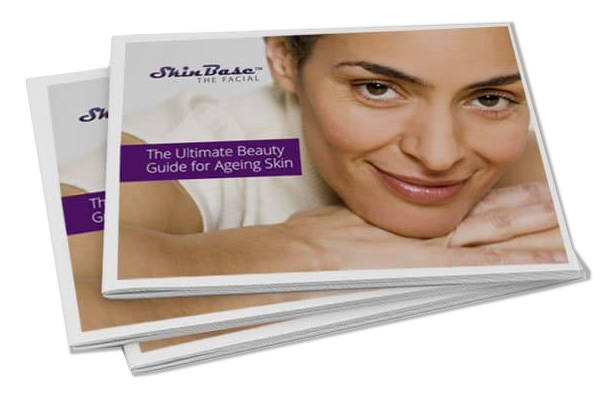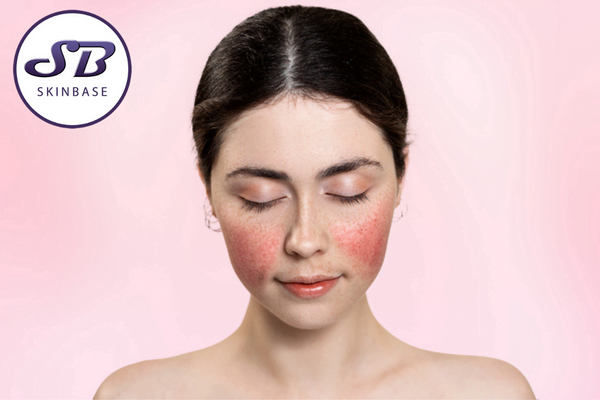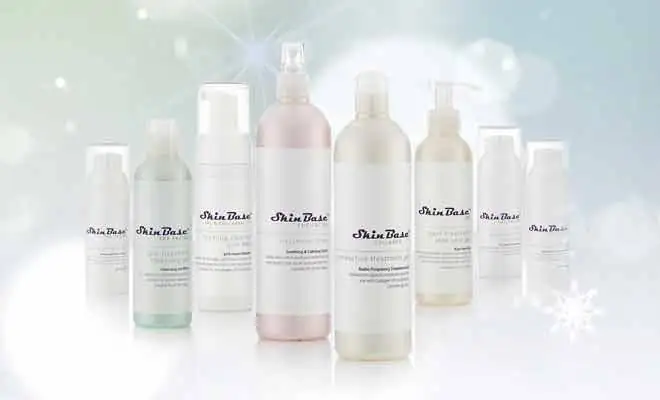Rosacea is a long-term skin condition that can cause flushing, visible blood vessels, and acne-like bumps on the skin. Rosacea usually appears on the cheeks, nose, chin, and forehead. Less commonly, your neck, head, ears, or chest may also be affected. There are four types of rosacea identified by a worldwide expert panel. Symptoms differ between each subtype.
- Erythematotelangiectatic Rosacea
- Rhinophyma
- Ocular Rosacea
- Papulopustular Rosacea
SkinBase Transformation of The Year 2022
The Search has begun! You could be jetting off to the Caribbean. Follow the link for more information about the competition and how to enter.
Find out more
Erythematotelangiectatic Rosacea
Erythematotelangiectatic Rosacea (ETR) is characterised by redness and flushing at the centre of your face. Broken blood vessels may also be present, along with swollen, sensitive, burning, dry and scaly skin. ETR is considered the most common subtype of rosacea, and environmental triggers are often causes.
Rhinophyma Rosacea
Rhinophyma is a rare form of rosacea that often presents itself in men between 50 and 70 years old who experience a thickening of the skin on the nose. The nose becomes visibly large, red, and bumpy. Those who suffer from Rhinophyma usually have another subtype of rosacea too. There are no known causes of Rhinophyma as recent research has disproven the connection between sufferers and alcohol use.
Ocular Rosacea
Ocular Rosacea symptoms centre on the eye area, and sufferers may experience gritty, bloodshot, and watery eyes. Eyes may also be dry, burning, or itchy with cysts or broken blood vessels. This subtype can result in light sensitivity and diminished vision.
Papulopustular Rosacea
Papulopustular rosacea is known as acne rosacea since it is often mistaken for acne. This confusion occurs as small pus-filled bumps appear on the skin and resemble acne-like breakouts. Other symptoms also contribute to the mix-up, as skin may be oily, red, and sensitive. This type of rosacea will be the focus of the blog.
Symptoms
Pus-filled bumps on your skin are usually the first signs of acne rosacea developing. Then, the skin may become itchy or hot to the touch. You may also experience regular breakouts. Lighter-skinned sufferers are likely to develop a flushed, red face. However, on darker skin the flush may appear yellow or dusty brown. This type of rosacea always occurs with textured skin and bumps and may present as raised patches of skin.
Triggers
Experts do not know what causes rosacea. There are several known triggers proven to make the condition worse. The key to handling rosacea is understanding which triggers are relevant to you to avoid them as much as possible. Triggers vary by person, so you are unlikely to be set off by all known factors. Using a diary to keep track of triggers is a great way to manage the condition.
Stress
A study from the National Rosacea Society (NRS) suggests that emotional stress is a trigger for 79% of those with the condition. If you are one of the people finding themselves flushed after a stressful event or during a stressful period, stress management techniques may be beneficial. For example, practising mindfulness or meditation may minimise stress. Other strong emotions that come on suddenly may also trigger rosacea, such as embarrassment or laughter.
Hot Baths or Saunas
Your skin does not like extreme temperatures, so a hot bath prompts rosacea symptoms in some people. Hot water causes dilation of the blood vessels, which then triggers red skin. Of those studied by the NRS, over 50% had outbreaks after a bathing in hot water. If you are a sufferer who does not respond well to higher temperatures, turn it down and bathe or shower in cooler water.
Alcohol
Alcohol is no longer believed to cause rosacea. However, drinking a small amount can trigger Papulopustular Rosacea symptoms such as flushing and redness. As with high temperatures, alcohol dilates blood vessels, which increases redness in the face. Studies show red wine is the biggest alcoholic trigger for rosacea. To prevent a flare-up, limit alcohol consumption and choose a beverage less triggering than red wine.
Hairspray
Alcohol can wreak havoc on your skin even when you are not consuming it. Hairsprays and other cosmetic products can cause a redness flare-up if they come into contact with your skin. The alcohol content they contain can cause your blood vessels to dilate just as they do after consumption. This irritation is also true for some perfumes, moisturisers, toners, and soaps. The best way to ensure your skin remains calm is to find skincare and beauty products that do not contain alcohol and therefore cannot irritate your skin.
Food
Just as a hot bath can trigger rosacea symptoms, other heat can cause your skin to flare up. Spicy foods heat the skin and dilate blood vessels too. Sufferers may also be affected after consuming dairy or foods with histamine, such as chocolate, nuts, and tomatoes. If you think your diet contributes to your rosacea, you can start by removing potential triggers. For example, if you switch hot spices for something milder and your rosacea improves after two weeks, you should eliminate it from your diet altogether.
Sunlight
Sunlight is one of the most popular acne rosacea triggers, and just a few minutes of sunlight could lead to uncontrollable flushing and redness for some people. Dermatologists recommend that rosacea sufferers stay out of the sun during the peak hours of 11 am – 2 pm, wear a wide-brimmed hat, and wear a gentle SPF 30 daily. You can find the SkinBase Broad Spectrum SPF here to stay protected from the sun.
Exercise
Rosacea sufferers face a dilemma when it comes to exercise. Despite the health benefits of regular exercise, an intense workout commonly triggers rosacea. The National Rosacea Society found over 80% of people had a rosacea flare after exercising, as the unstable blood vessels in the face dilated even further. If you have rosacea and have found exercise to be a trigger, don’t be put off. A moderate-intensity exercise, broken down into 15-minute segments throughout the day, will reduce your chances of reddening skin. If you don’t have time for multiple exercise sessions, switch between hot and cool tasks to keep skin calm.
Risk Factors
Though anyone can develop rosacea, you are more likely to if you:
- Are a woman
- Are aged 30+
- Have a family history of rosacea
- Are a smoker
- Have fair skin
- Are overexposed to the sun
Treatment
Though there are currently no known cures for rosacea, there are treatments to minimise the appearance of symptoms.
Prescription Medications
A doctor may prescribe oral antibiotics, a gel or a cream, such as azelaic acid, to treat rosacea. These methods work by decreasing the swelling and redness of the skin. The gels or creams may have anti-inflammatory properties to soothe skin. A doctor may also recommend laser or light therapy to treat rosacea.
SkinBase IPL Rejuvenation
SkinBase IPL can be used to treat rosacea and minimise redness and flushing. IPL works by using cut-off filters to provide a range of wavelengths. First, unwanted wavelengths of light are filtered out, and those remaining treat a specific structure. For rosacea, the wavelengths of light target the small blood vessels trapped at the skin’s surface. The light damages the blood vessels, stimulating the body’s healing responses. This process allows the body to identify the damage and naturally remove the blood vessels, which helps to reduce redness and flushing. Discover our collection of free beauty guides.
Download a FREE beauty guide


